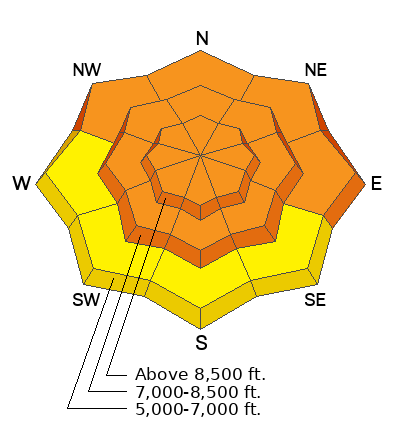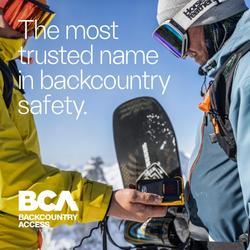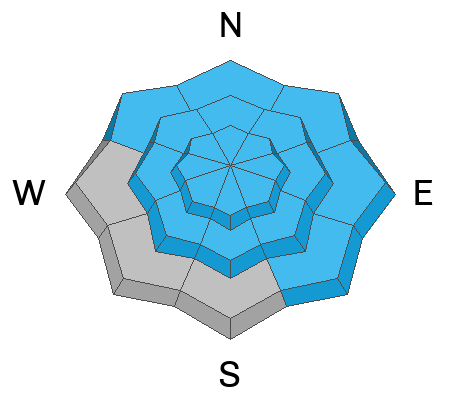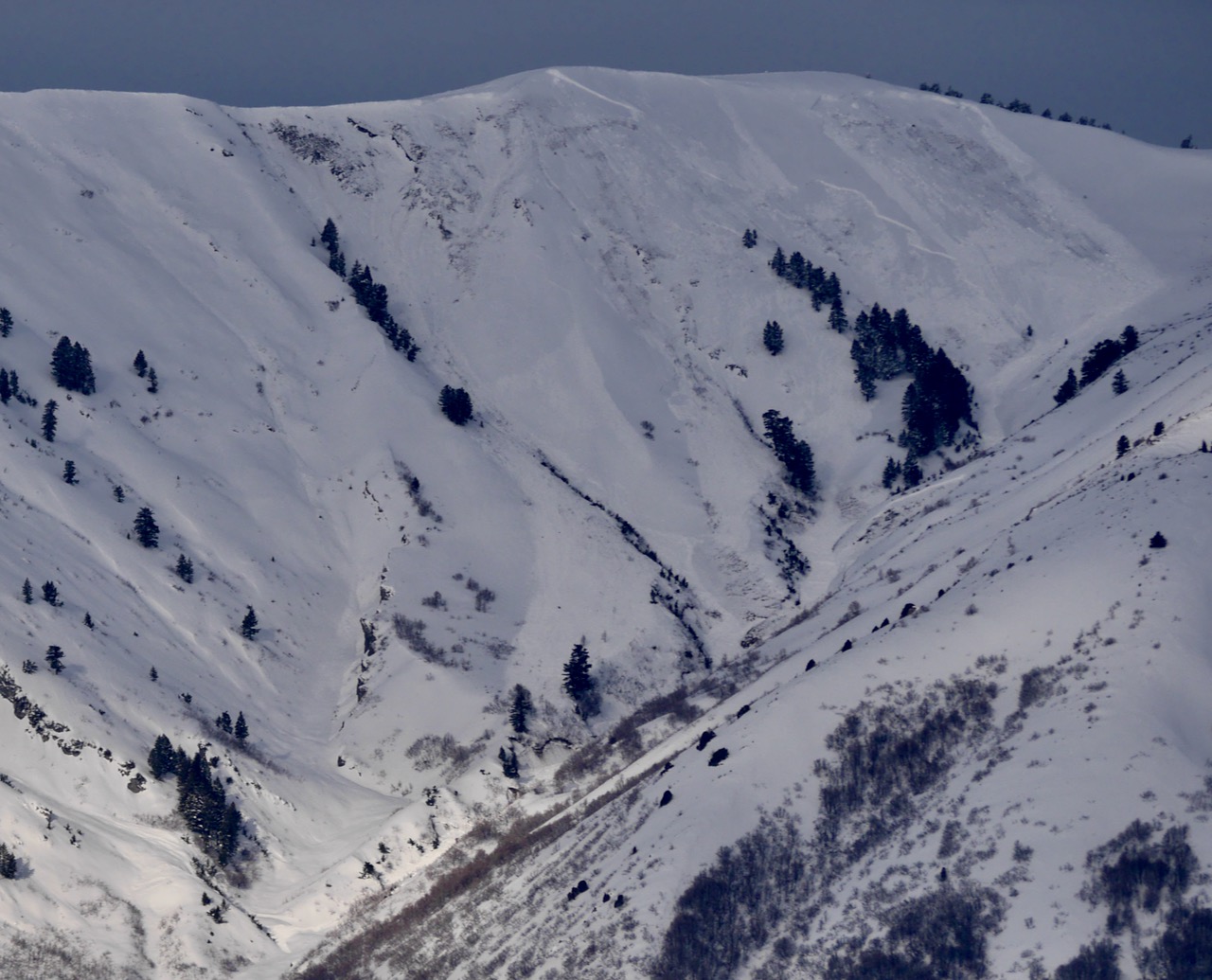The snow is gradually stabilizing, but people are still likely to trigger dangerous, destructive, and potentially life-threatening slab avalanches failing on a persistent weak layer. Poor snow structure exists on most slopes, with a stiff layer of heavy, wind-drifted snow capping a widespread layer of very weak, sugary, or faceted snow from the December dry spell. We've observed numerous signs of instability this week, including natural avalanches and abundant large audible collapses or whumpfs at all elevations. Now, though, the slab layer is so thick in many places, and as the snow gradually stabilizes, these red flags may not be as common, and people could still trigger avalanches without any apparent warning signs.
Winds increased overnight and are now blowing more than 30 mph with gusts in the mid-40s from the south at the 9700' CSI Logan Peak weather station. At 9500' on Paris Peak, the wind is much lighter, blowing 5 to 10 mph from the south-southwest, and it’s 24° F.
The Tony Grove Snotel at 8400' reports 31° F and 83 inches of total snow containing 134% of normal SWE (Snow Water Equivalent)
-Snow is possible this afternoon, but less than an inch of accumulation is forecasted. Expect mostly cloudy and mild conditions in the mountains today, with 8500' high temperatures expected to be around 35° F and a 10 to 15 mph wind blowing from the south-southwest.
-Tonight, 2 to 4 inches of snow is possible, with low temperatures around 23° F and 11 to 16 mph wind from the southwest.
-Snow is likely tomorrow afternoon, with up to 1 inch possible. It will be mostly cloudy with high temperatures around 33° F at 8500' and 10 mph wind from the southwest.
-Unsettled, cloudy weather will continue through most of the coming week, with snow possible or likely every day, but accumulations should remain on the light side.
Wednesday afternoon, a snowboarder remotely triggered a good-sized slab avalanche near the Backside pullout in Beaver Canyon. The avalanche on a southeast-facing slope at 6900' in elevation was 2 to 3 feet deep and around 100 feet wide. It highlights that the Backside is the backcountry, and unexpected avalanches could occur at low elevations, catching people off guard. (check out my video below)
Several very large natural avalanches were observed with brief clearing on Thursday; the most notable were in the Wellsville Range, but sizable natural slides were also visible in the Wood Camp and Steam Mill areas.
A HUGE natural avalanche was observed yesterday in Rattlesnake Canyon in the Wellsville Mountain Wilderness. It is visible from Hwy 89/91 in Sardine. (Chris Benson, 1-18-24)
Check out local observations and avalanches
HERE.








 Friday morning, I got views of some of this week's natural activity in the Wellsville Range, including this large avalanche in Rattlesnake, but flat light hindered photography.
Friday morning, I got views of some of this week's natural activity in the Wellsville Range, including this large avalanche in Rattlesnake, but flat light hindered photography.